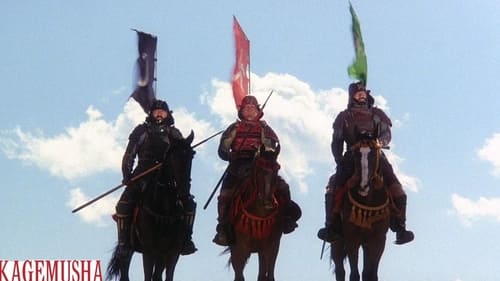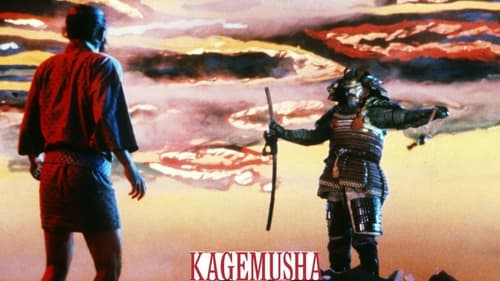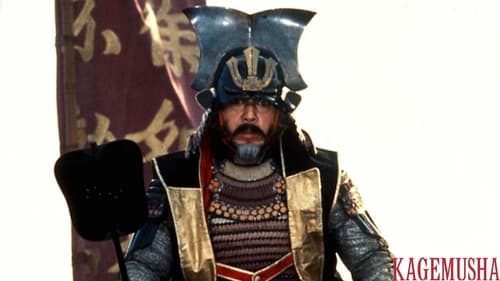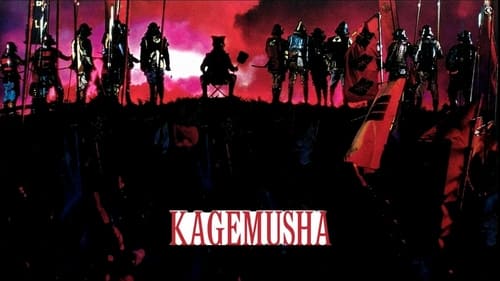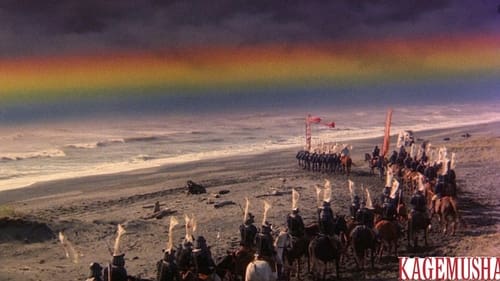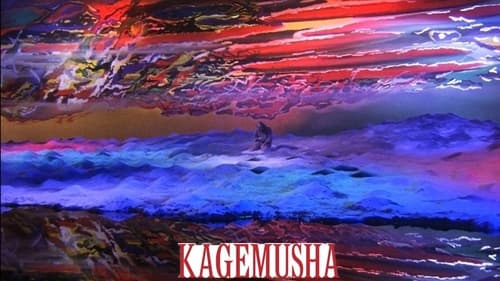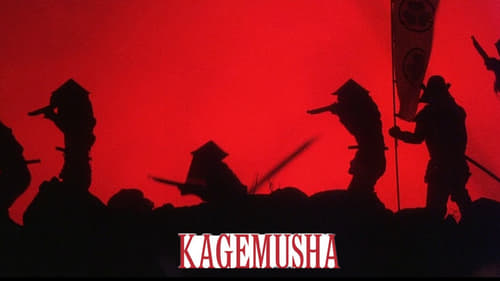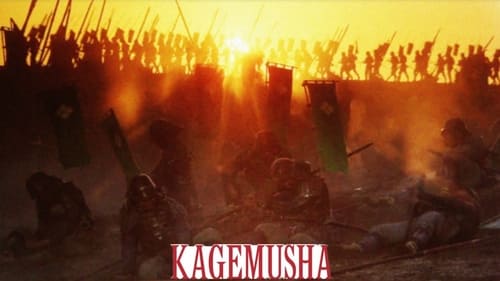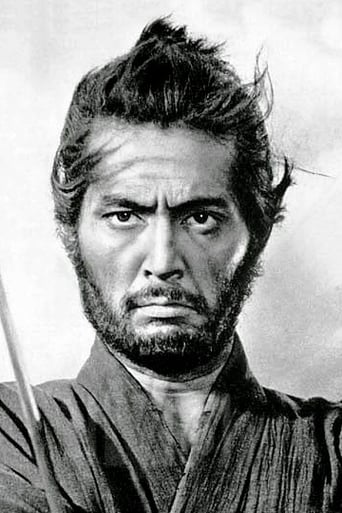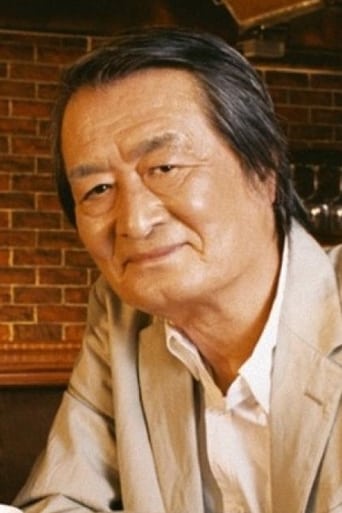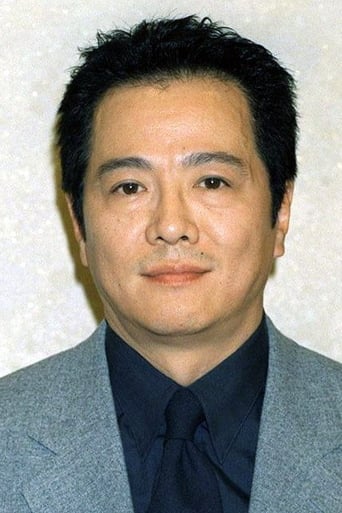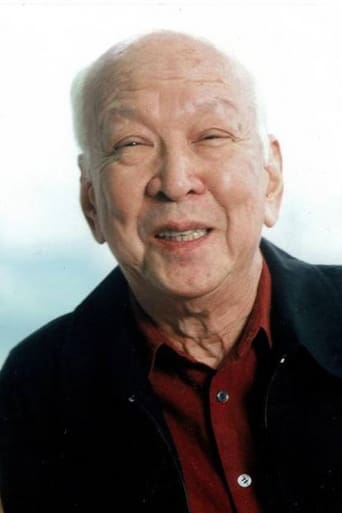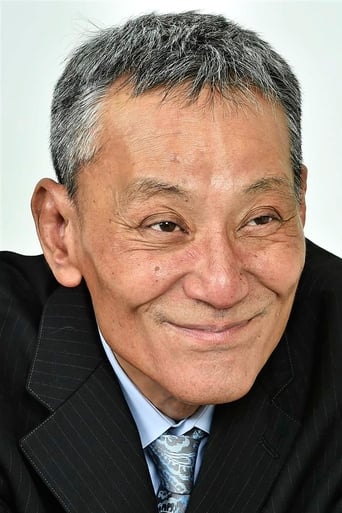Wordiezett
So much average
Comwayon
A Disappointing Continuation
Keeley Coleman
The thing I enjoyed most about the film is the fact that it doesn't shy away from being a super-sized-cliche;
Blueghost
Kurosawa said it himself, this is a film that was designed as a dress rehearsal for "RAN", and you can see it. Kagemusha has a lot of experimentation with shots, colors, and a fairly loose editing style with a kind of free form structure. It's essentially a giant experimentation for what could work in a film, and what doesn't. The style is fairly rushed as well. The kind of care or calculated artwork that we'd normally get from a Kurosawa film is simply not here.That's not to say that the film is bad, because it isn't, but the kind of careful craftsmanship that we're so used to with a Kurosawa has been given some high octane fuel, and as such we don't get shots that linger too long on one subject. Not shots that are muted in tone. We get lots of moving shots as well; pans, a few subtle zooms, and the occasional tracking shot. This isn't normal for a Kurosawa film. Again, here we have a kind of "let's shoot this to see what we've got" kind of movie. The culmination of which we will eventually see in the film he shot afterwards; "RAN"."Kagemusha" is also a bit of a departure for Kurosawa in that it deals with real historical events and characters. Most of the films I've seen by Kurosawa have dealt with traditional fiction. But here we a kind of docudrama, albeit altered for dramatic effect and for the big screen. Again, not such a big deal here, because the film does work.Lots of people heap praises on this film, and where I admit to its craftsmanship, it's essentially a preparation for another film. Watch it for what it's worth and enjoy what you can.
riolama
This is the best movie I have ever seen. In any language from any culture. I thought so when I first saw it thirty years ago and I still think so now, despite not being able to see it in its original mind- blowing wide-screen form. It is not just one of the most visually beautiful films ever done. The positive reviews are all accurate, but many focus too much on Kurosawa in general rather than on the particular theme of this film, which is closely tied to Japanese history and ideals, and which unites all the specific beauties of text and technique. This is not simply a film about historical belatedness (a lament that the ancient idea of heroes is now exposed by the modern world to be a hollow fantasy, as Ebert and other suggest), or the Shakespearian tragedy of inevitable discrepancy between individual and historical role, as in Henry V), although the film includes something of these elements. It is more--a beautiful elegy to a positive feudal ideal of leadership that goes beyond individual power to sacrifice for country--embodied in the figure of Takeda Shingin. Great tactician, unsurpassed "rider" of horses and women, inspiring and fearsome military leader, he is also a student of the Sutras and a man who "stepped right into people's hearts," as one of his aides says. The opening scene shows he listens to criticism and has a sense of irony about himself; when the thief who is to play his "double" accuses him of being a murderer, he agrees but says he will do anything to unite the country in order to prevent endless war and bloodshed. The same actor plays the lord and his double with incredible depth and subtlety. Shingin is killed (by a gun) early in the movie; as he is dying he tells his generals not to let anyone know he's dead for three years--to let the thief replace him, so as to give the clan time to prepare for confrontation with the western- armed enemy--and, given that his clan is not armed with western firearms, not to move out of its own territory. The double or "shadow warrior" who takes his place begins to identify with the role and finds out that literal crucifixion (for theft) would have been nothing compared to the loneliness at the top where the weight of the world is on the leader's shoulders. Every moment of his existence requires that he sacrifice everything personal to a role that no one can ever fill perfectly, and that is now bereft of the one man who came closest to doing so. The kagemusha doesn't have Shingin's "riding ability" or his wounds or the depth of self-understanding to fill the lord's role and, when he cockily believes he can do so for a moment, he is discovered and thrown out. Neither he, nor any modern man trying to live an identity larger than himself--including the artist who, like the kagemusha, is creating a shadow of the ideal--can replace this feudal ideal which was superseded (literally, massacred at the end) starting over 400 years ago by Christianized and technologized decadence, represented by Nobunaga and Ieyasu. The kagemusha learns slowly, as we do, what the ABSENCE of the irreplaceable Shingin means to his people and symbolically to Japan. Many scenes build up as if to a great battle or political confrontation, and the generals keep the show going, but it is all hollow--the leader is gone. Shingin's ambitious and over-eager son then leads the Takeda clan out of the mountains--to a destruction by western technology reminiscent of Hiroshima and Nagasaki (especially since the historical battle was at a place named Nagashino). The point of the film is to show a lost ideal of the past which can never be regained and without which everything afterward is a shadow, like the kagemusha ("shadow warrior"). The double (like the artist) seems possessed with Shingen's ghost in the last scenes as he watches in horror while the son, in a self-centered Oedipal frenzy, destroys the flower of his people by moving beyond the legitimate limits of his territory and his scope, and the double can only throw a futile spear at the modern weaponry which destroys him. But a shadow identity from a meaningful past is better than none at all (Kurosawa shores these fragments against modern ruins at least as well as T.S. Eliot in "The Waste Land").
nightwolf517
I thought that it was very interesting to find out that this movie actually had problems getting the funds necessary to finish the film. George Lucas and Francis Ford Coppola helped convince 20th Century-Fox to fund the remaining portion of the budget in exchange for international distribution rights for Kagemusha. I thought it was neat how Kurosawa create huge battle scenes with little funding. He created the 'illusion' of a huge battle by showing scenes of marching soldiers, small clips of battle scenes, and sound effects. It is unbelievable that this film was so close to not getting produced because of the funding difficulties. I am very happy that this film got the funding it needed.
loschavez
The tremendous Kagemusha is growing old. Kurosawa's genius, however, never dies, and this phenomenal three hours of Japanese color is as young as any film in the archives. The 180 minutes fly by watching such splendor. There are many memorable minutes that flare out brightly in this unbelievable film. Too many to bring back in one review. --Spoilers:I'm especially thrilled to think of Shingen's royal crest, with this motto. The great Shogun: "Swift as the Wind, Silent as the Forest, Merciless as Fire, and Immoveable as the Mountain." Yet, his banner at the final frames of this gorgeous movie; with those words on it, lies beneath the waters of a seashore; finally beaten down. Kagemusha, his shadow warrior is seen above it, lamenting.Leading up to the climax, a particularly exquisite scene has the victorious foe Oda Nobunaga singing defiant words of a mighty Samurai. For the life of me, I wish I understood them. This wonderful actor, Daisuke Ryu; is absolutely mesmerizing as he dances, holding a fan in his hand! Only Kurosawa could have directed it. The thief who is made Kagemusha had the best lines in this script; Tatsuya Makadai, on his knees but laughing. He responds to the Lord; who denounces him: "ME, the THIEF? I only steal coins, You steal whole domains!" What an unforgettable film!



